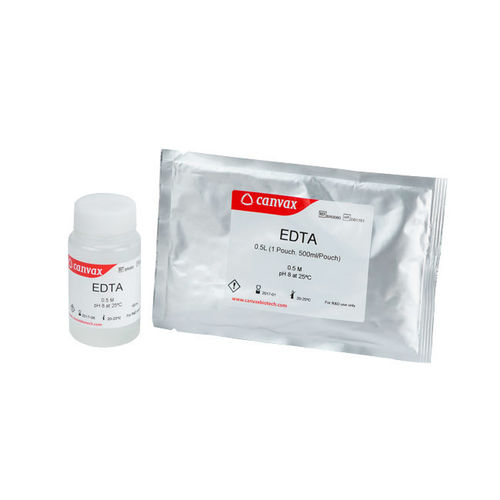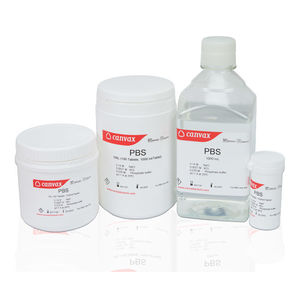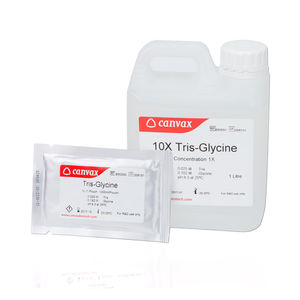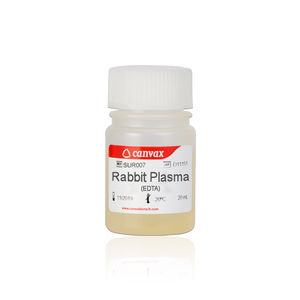
Solution reagent BR006 seriesproteasetrypsin-EDTAfor molecular biology
Add to favorites
Compare this product
Characteristics
- Type
- solution, protease, trypsin-EDTA
- Applications
- for molecular biology, blood sample
- Format
- liquid, powder
- Tested parameter
- calcium, acetic acid
Description
Ethylene-diamine-tetra acetic acid (EDTA) is a high quality and convenient solution that chelates a variety of polyvalent cations such as Ca2+ and Mg 2+. EDTA is usually used as an inactivator of metal-dependent enzymes, preventing damage to DNA and RNA.
In cell cultures, it is used to avoid clumping of cells in liquid suspensions, as EDTA binds to calcium and prevents joining of cadherins between cells.
Advantages & Features
Reliable: stringent quality control standards to guarantee lot-to-lot consistency.
High Quality: free of DNAse, RNase or protease contamination.
Time-saving due its ready-to-use format that saves experiment preparation time.
Safe: prevents damage to DNA and RNA.
Risk-free: product covered by our Quality 100% Guarantee.
Specifications
Chemicals: Analytical grade.
Concentration: 0.5 M EDTA.
pH: 8± 0.05 at 25 ºC.
Includes
Pouch format:
– Exactly pre-weighed powder (500 mL/pouch)
Aqueous solution format:
– 100 mL of 0.5M EDTA Solution
Applications
Anticoagulant for blood samples and its storage.
Abduct the metal required to metal-dependent enzyme, inactivating the reactions.
Avoid junctions between cells by cadherins, usually used to cell culture procedures.
Used in TAE and TBE buffers because it inhibits metal-dependent nucleases by chelating the divalent cations (Ca2+ Mg2+), protecting the DNA from nucleases during the run.
Added to TE buffer, used to solubilize DNA and RNA, inactivating nucleases by binding to metals cations required by these enzymes.
Quality Control
Strict quality controls in every phase of manufacturing to guarantee the highest quality and reproducibility.
Catalogs
No catalogs are available for this product.
See all of Canvax‘s catalogsRelated Searches
- Assay kit
- Solution reagent kit
- Blood assay kit
- Molecular biology reagent kit
- Plasma assay kit
- Research reagent kit
- Protein reagent kit
- Laboratory reagent kit
- Molecular test kit
- Enzyme reagent kit
- Respiratory infection test kit
- Optical assay kit
- Reagent medium reagent kit
- Immunology reagent
- Antibody
- Fluorescence assay kit
- Dye reagent
- COVID-19 assay kit
- Buffer solution reagent kit
- Real-time PCR test kit
*Prices are pre-tax. They exclude delivery charges and customs duties and do not include additional charges for installation or activation options. Prices are indicative only and may vary by country, with changes to the cost of raw materials and exchange rates.




